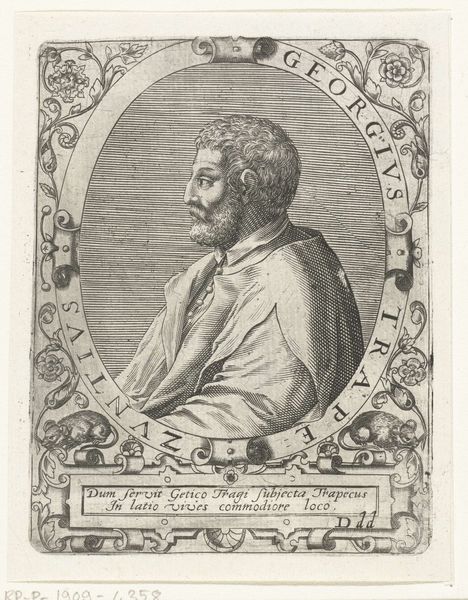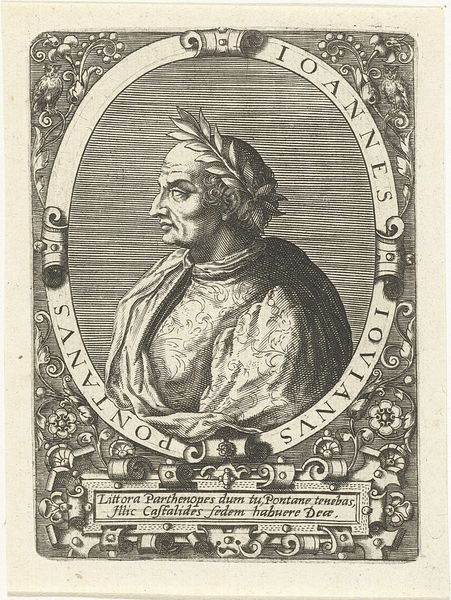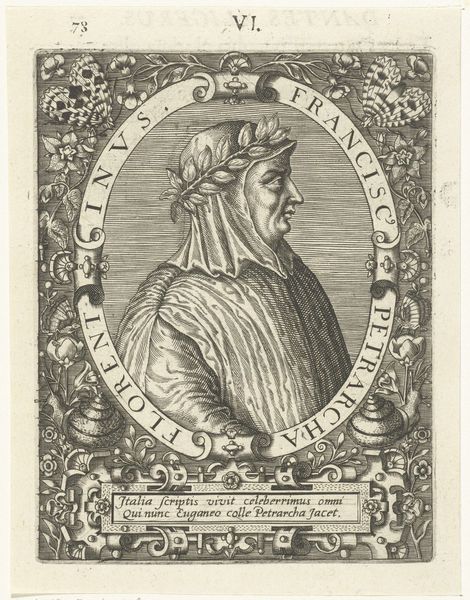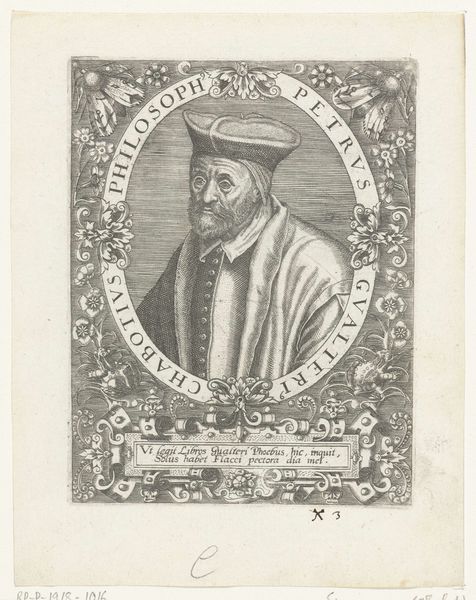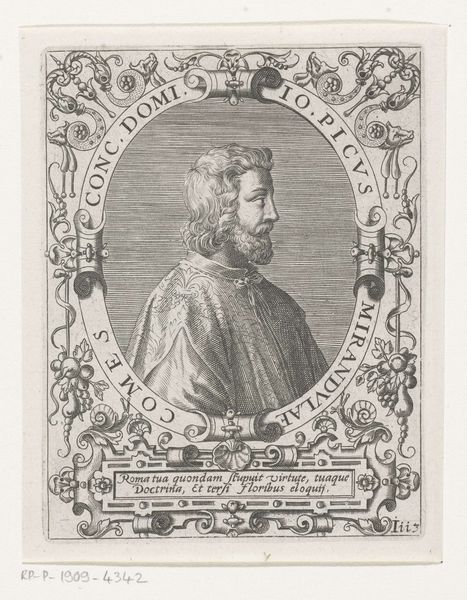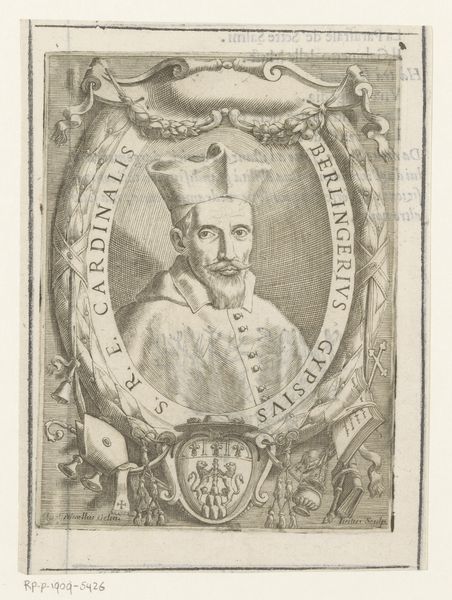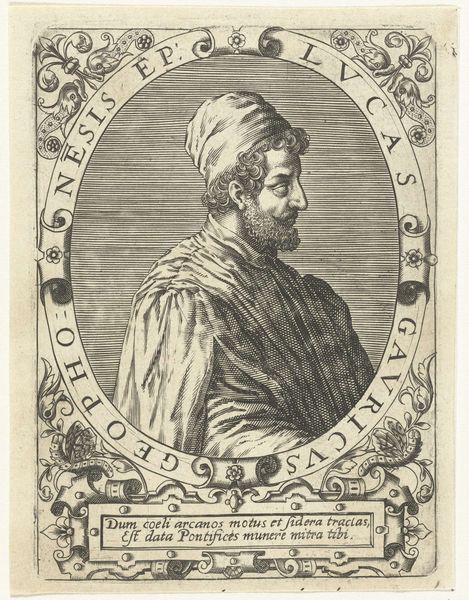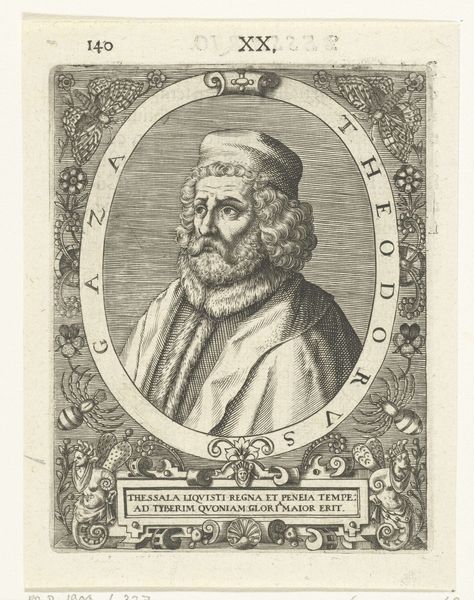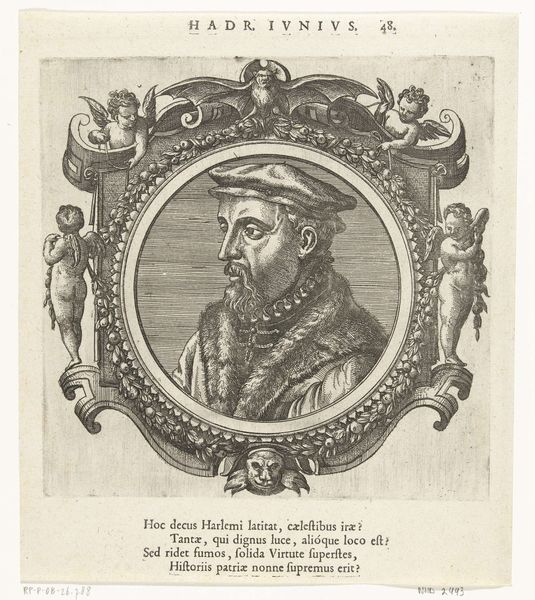
drawing, print, engraving
#
portrait
#
drawing
#
baroque
#
pen drawing
# print
#
old engraving style
#
figuration
#
form
#
line
#
pen work
#
northern-renaissance
#
engraving
Dimensions: height 140 mm, width 100 mm
Copyright: Rijks Museum: Open Domain
Curator: Up next we have "Portret van Filippo Decio" an engraving created around 1597-1599 by Theodor de Bry, now in the collection of the Rijksmuseum. Editor: The texture immediately strikes me; there’s a certain delicateness to the way the lines define form. The contrast is fascinating considering the material itself, paper. It almost seems tactile. Curator: De Bry's engravings were, in essence, about distilling character through a symbolic language understood at the time. Consider the framing, for instance. What might seem like mere decoration is brimming with encoded meanings, drawing on both classical and contemporary humanist imagery. Editor: It also suggests something of the economics of portraiture at the time, doesn't it? Engravings democratized access to likeness. You could distribute them widely, create a repeatable image through relatively standardized labor. How did De Bry’s process here relate to the subject’s standing and access to visibility? Curator: Precisely! Decio, as a jurist, was deeply embedded in the social and legal structures of his time. The cherubs, foliage, and Latin inscriptions—they all converge to elevate Decio, almost deifying his intellect and contributions to legal scholarship. Editor: It is also very economical of form: there’s an exactitude born from what must have been the rigorous control of line, almost mass-producible if the craftsmanship were easily repeatable, which it perhaps was. So how are the materials and mode of reproduction communicating power? Is it through scarcity, or perhaps it’s dissemination that builds prestige? Curator: I would argue both. Engravings, while reproducible, still required specialized skill. Dissemination amplifies the subject's influence but simultaneously relies on the perception of specialized creation to give that person substance, gravitas. It’s the duality that creates a symbolic potency, the impression of lasting influence, that the portrait aims to construct. Editor: Thank you. It’s intriguing to reflect on how this print’s accessibility actually reinforces social hierarchies even while seemingly undermining them, materially speaking. Curator: A lasting symbolic legacy—printed on paper, shared through time.
Comments
No comments
Be the first to comment and join the conversation on the ultimate creative platform.


